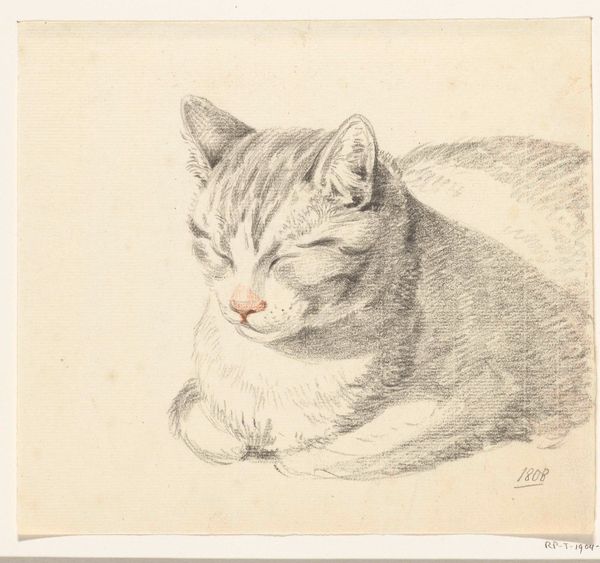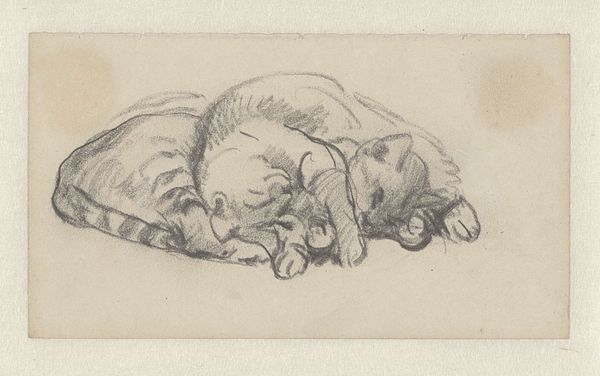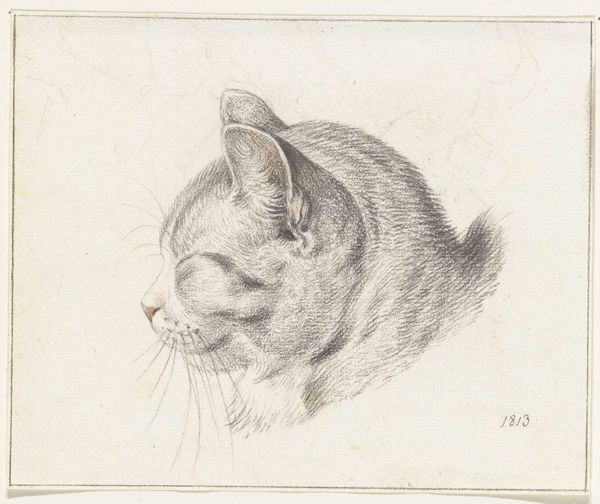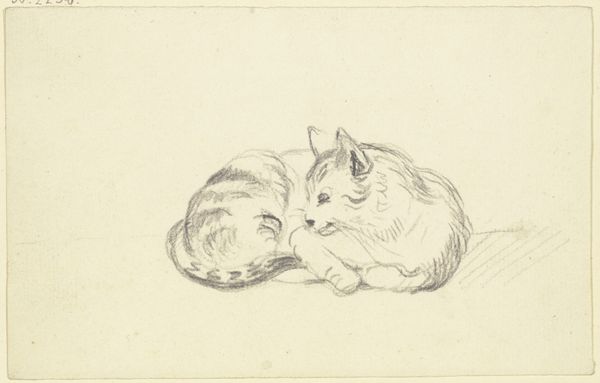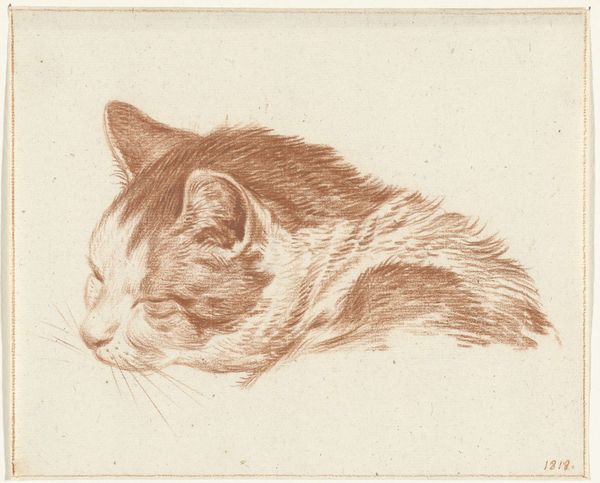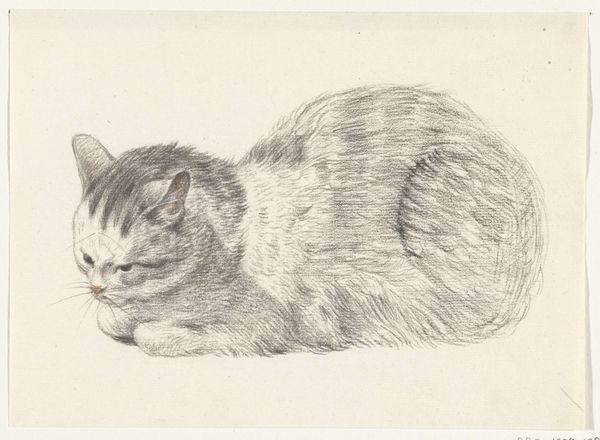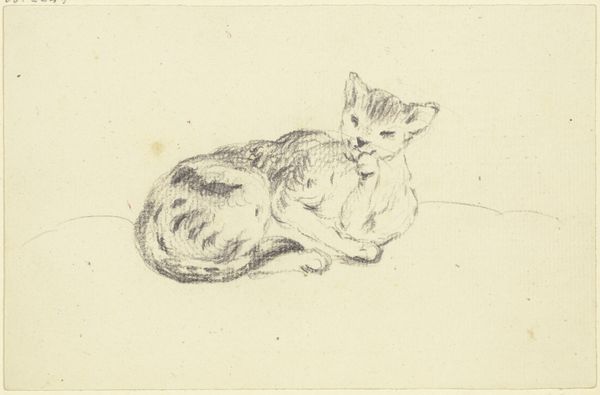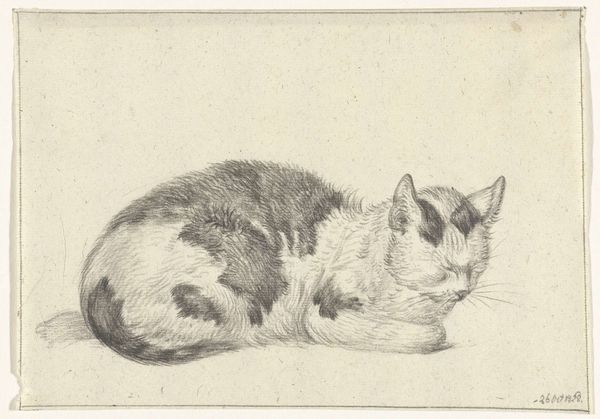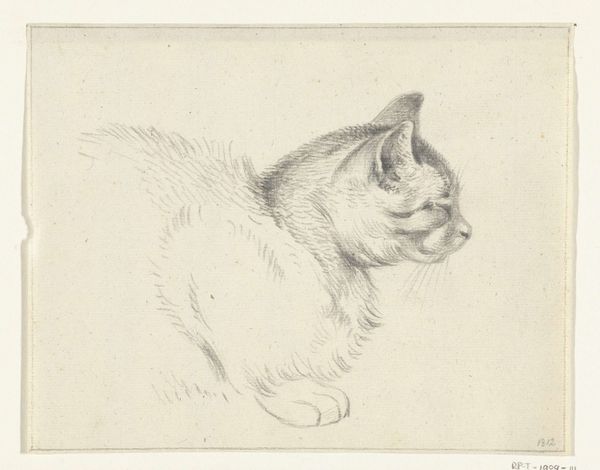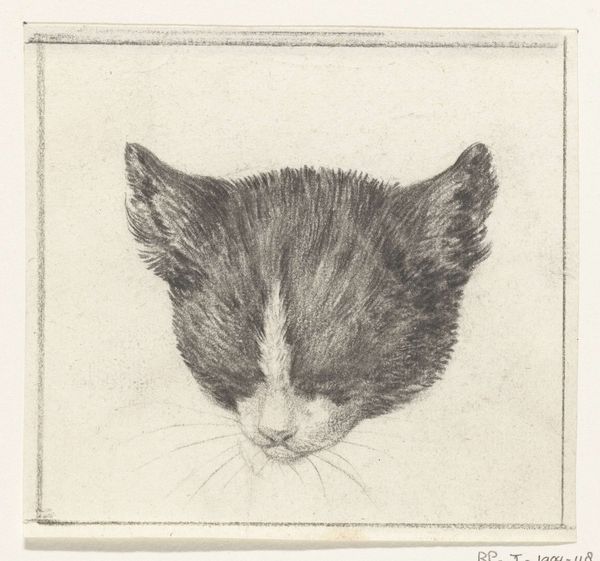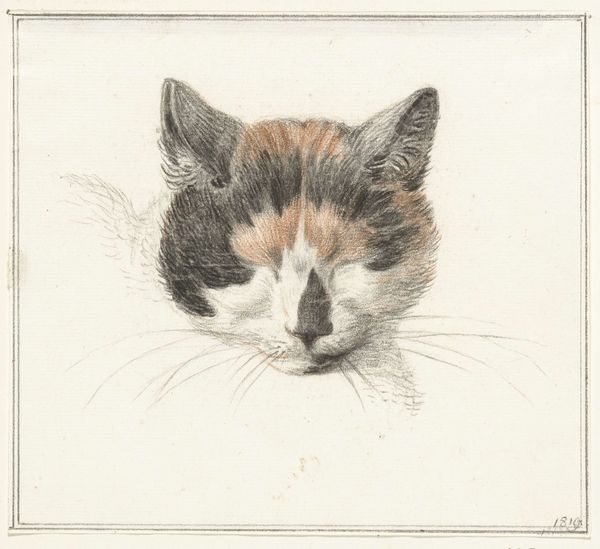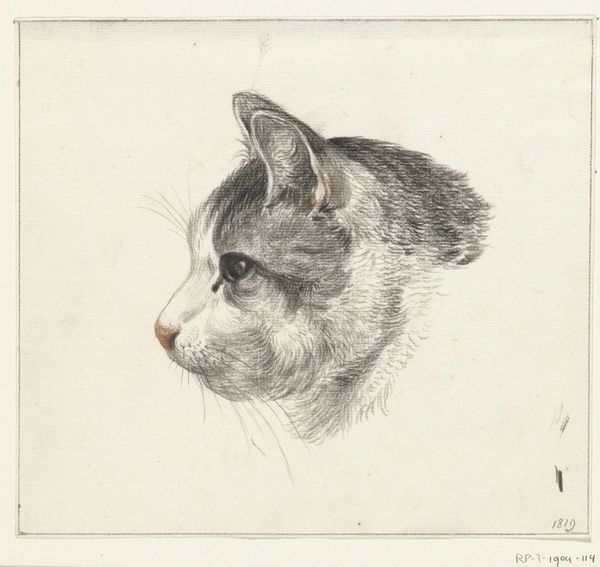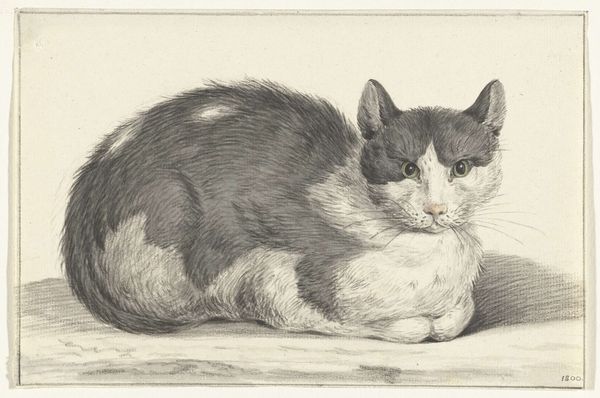
drawing, pencil
#
portrait
#
pencil drawn
#
drawing
#
animal
#
pencil sketch
#
pencil
#
pencil work
Dimensions: height 159 mm, width 153 mm
Copyright: Rijks Museum: Open Domain
Editor: Here we have Jean Bernard's "Head of a Cat, Seen from the Front," likely from 1828. It's a pencil drawing, and I find its quiet simplicity quite charming. What strikes you most about it? Curator: The unassuming nature of the materials used – pencil and paper – invites consideration of their accessibility and potential. Consider the socio-economic implications of creating art with readily available resources. How might Bernard's choice reflect the era’s artistic landscape? Editor: So, you are drawn to the artistic means, even with an apparently straightforward piece? Curator: Precisely. Pencil wasn't always considered a fine art medium. Think about the social perception of "drawing" versus "painting" in the early 19th century. Where would you place a drawing like this on the art market value chain? And who, do you imagine, would have owned it at the time? Editor: Hmm, perhaps part of a larger sketchbook? Was it meant for public display or personal use? Curator: Good questions. Also, examine the labor involved. The repeated strokes, the careful shading – it’s a study, a practice. The ‘drawing’ performs labour by committing to the task of refining observational skills and building knowledge about animal anatomy, light, and shading. And by purchasing graphite, Bernard engaged in the mining industries of the 19th Century as well as the commodified availability of writing tools. Where is this commodity ‘headed’? And what can it do when we re-employ it? Editor: So the cat becomes less the focus and more a way of discussing materials and processes. Curator: Exactly! By shifting the focus to the production, we unlock new avenues of interpretation. Editor: I never thought of it that way! Considering the humble materials and the social context of art production gives me a completely different perspective. Curator: It shifts our appreciation from passive admiration to active engagement with the very conditions of the artwork's existence.
Comments
No comments
Be the first to comment and join the conversation on the ultimate creative platform.
